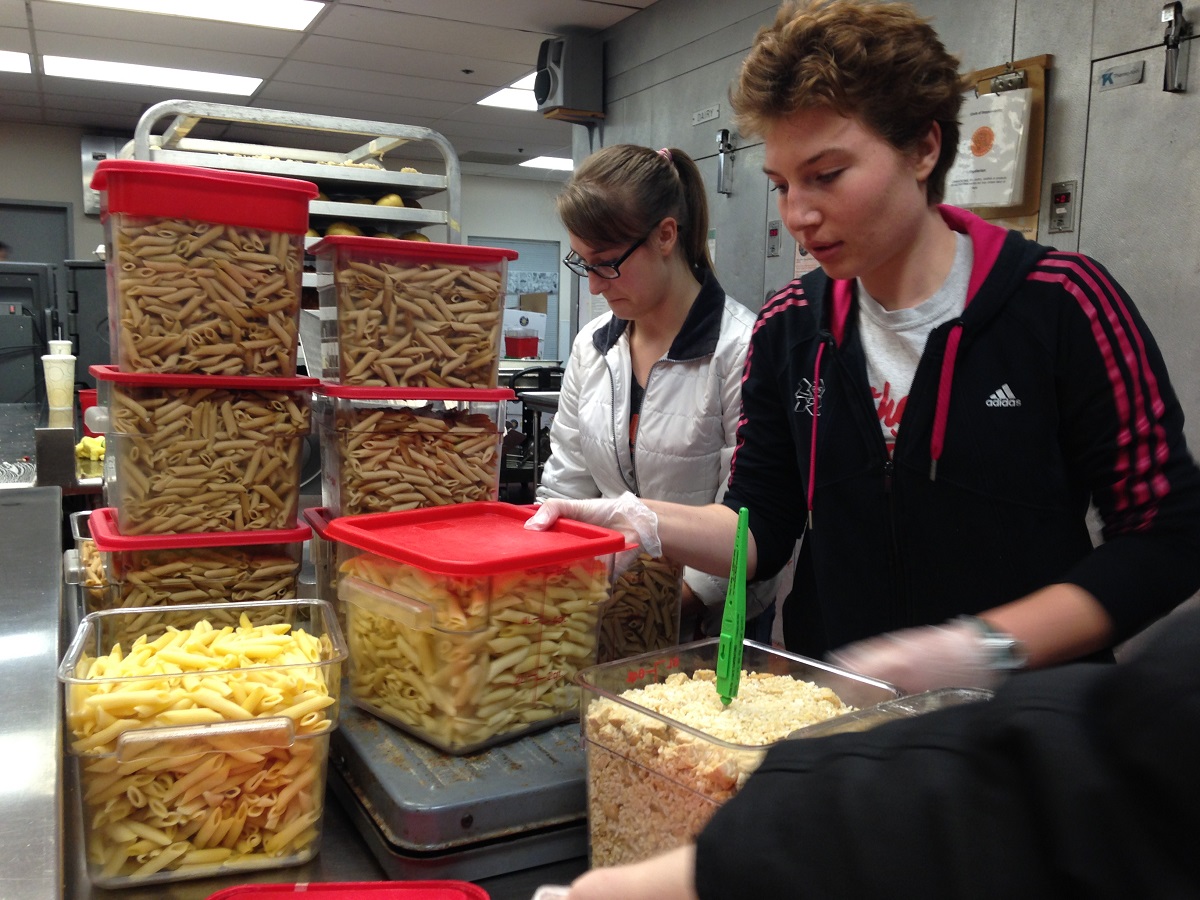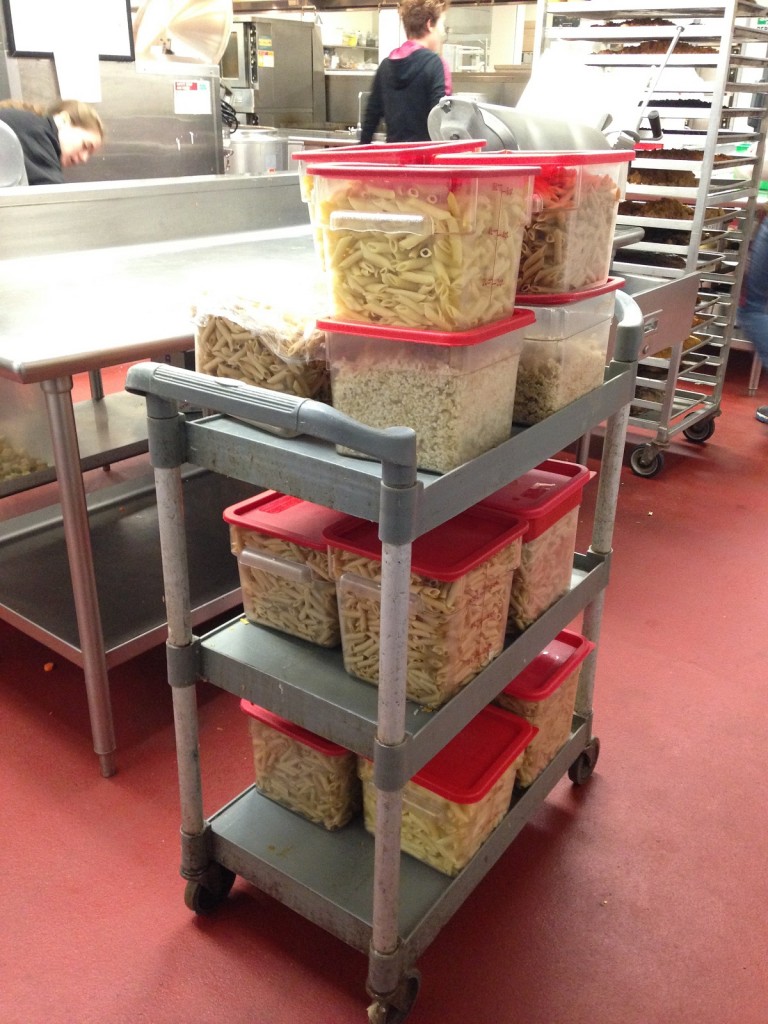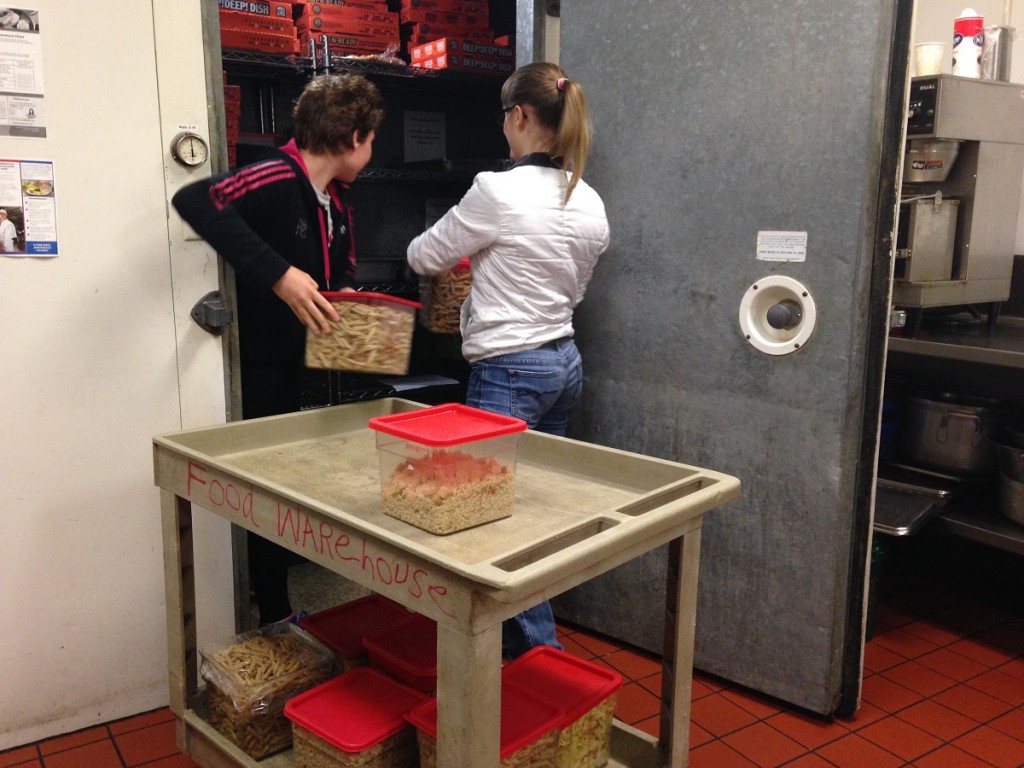Staying Connected to My Food Recovery Roots
Before joining Bon Appétit, I spent much of my time on the national team at Food Recovery Network (FRN), working one-on-one with students at campuses around the country to coach them through starting their own food recovery programs. For me, one of the most exciting aspects of my job transition from FRN to Bon Appétit has been getting to meet in person many of these FRN students and the dining teams that helped them make those programs happen.

FRN volunteers take the temperature of the food to ensure it’s safe to donate and weigh it to report donation numbers to FRN natonial

75 pounds of recovered pasta and rice with tempeh!
Last summer, sitting at my computer at the FRN office in College Park, Maryland, I helped Maya Kaup, an incredibly bright and driven sophomore at Willamette University, finish getting her recovery program up and running, but she really had it all together. She worked with Bon Appétit’s Willamette dining team to start a robust recovery program from the start — collecting the surplus prepared food that would have otherwise been composted from the Goudy Dining Hall seven nights a week and donating it to the local Union Gospel Mission and a smaller local women’s shelter.
Several months ago, as part of a visit to Willamette University as Bon Appétit’s West Coast fellow, I joined Maya and two of her volunteers on their Wednesday night food recovery. We met at the loading dock of Goudy Dining Hall at 7:30 pm, and after stepping into the kitchen, pulling hair back, washing hands and donning gloves, the recovery began. The dining team had already put the food that would be donated into the reusable containers purchased through a grant from FRN national. The students took the temperature of the food inside each container and weighed and recorded the types and quantities of the food for FRN national reporting.
Maya said they usually recover about 50 pounds each night of a wide range of foods, but this recovery was about 75 pounds of pasta and rice with tempeh.

Unloading the food into the Union Gospel Mission’s walk-in refrigerator
We then packaged the food into Maya’s trunk and drove it a mile down the road to Union Gospel Mission, where the students unloaded the food into the walk in refrigerator, picked up the containers from last time, and headed back. The whole operation took less than 30 minutes, and the Union Gospel Mission employee told me that the food would be eaten right away.
They serve up to 200 people each meal at the mission, and Maya says they are excited to take any food Goudy has leftover and can find great uses for it. The impact she was making really hit home for Maya when she shared a lunch there and saw how many people rely on the mission and how their donations are an important supplement to the massive meals the mission staff prepares every day.